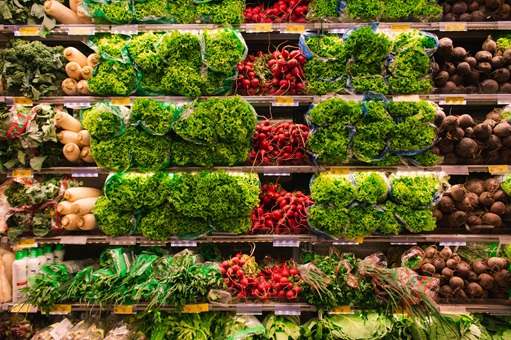The 4Ps of Kroger marketing—Product, Price, Place, and Promotion—serve as the foundation of any successful business strategy. For Kroger, one of the largest grocery retail chains in the United States, mastering these principles has been essential for staying competitive in a fast-paced and ever-evolving market. This article examines how Kroger leverages the 4Ps and uncovers practical lessons businesses can learn from its approach.
By understanding Kroger’s innovative use of the 4Ps, companies can gain valuable insights into improving their own strategies to meet customer needs, maximize profitability, and achieve sustainable growth.
1. Product: The Power of Variety and Quality
The first of the 4Ps of Kroger Marketing Strategy is the Product. Kroger’s strength lies in its ability to offer a wide range of products that cater to diverse customer preferences. Whether you’re shopping for premium organic produce or budget-friendly essentials, Kroger ensures its shelves meet the needs of all demographics.
Key Elements of Kroger’s Product Strategy
- Private Label Excellence: Kroger’s private-label brands, like Simple Truth and Kroger Brand, have set a benchmark for affordability and quality. These brands build customer loyalty by offering unique, high-value alternatives to national brands.
- Diverse Product Categories: Kroger carries an extensive product selection, including fresh produce, household items, pharmacy services, and even prepared meals. This broad assortment transforms Kroger into a one-stop-shop experience.
- Commitment to Freshness: Customers trust Kroger for its commitment to delivering fresh, high-quality food. The company’s investments in sourcing, supply chain management, and in-store practices ensure its products exceed expectations.
Business Lesson #1: Build a Unique Value Proposition
Businesses can learn the importance of creating and delivering products that solve real customer problems. By focusing on quality, differentiation, and innovation—like Kroger’s private-label brands—you can attract loyal customers and stand out in competitive markets. Working on your products first should be your first attention when it comes to following The 4Ps of Kroger marketing.

2. Price: Value Beyond Cost
Pricing is the second of 4Ps of Kroger Marketing Strategy. Kroger’s pricing strategy reflects its deep understanding of customer priorities. By offering everyday low prices and personalized discounts, the company ensures affordability without sacrificing profitability.
Key Aspects of Kroger’s Pricing Strategy
- Everyday Low Pricing (EDLP): Kroger’s EDLP approach eliminates the need for frequent discounts, creating trust and consistency for customers.
- Dynamic and Competitive Pricing: Kroger uses data analytics to optimize prices based on regional demand, competition, and customer trends.
- Customer Loyalty Programs: The Kroger Plus Card rewards shoppers with discounts, personalized offers, and fuel savings. This loyalty program not only boosts sales but also strengthens long-term customer relationships.
Read Also Coyyn.com Business: Transforming the Future of Digital Finance
Business Lesson #2: Prioritize Perceived Value
3. Place: Accessibility and Innovation
When talking about the 4Ps of Kroger Marketing Strategy The Place of the service is very important. Kroger ensures customers have seamless access to its products, whether they’re shopping in physical stores or online. Its commitment to convenience is a key factor in its success.
Highlights of Kroger’s Place Strategy
- Extensive Store Network: With over 2,700 locations across the U.S., Kroger ensures physical accessibility for millions of customers.
- Digital Transformation: Kroger’s online platform and app provide customers with the convenience of ordering groceries from anywhere, with options for curbside pickup or delivery.
- Partnerships for Efficiency: Collaborations with companies like Ocado have enabled Kroger to establish automated warehouses, improving the speed and accuracy of its logistics.
Business Lesson #3: Meet Customers Where They Are
Today’s consumers expect convenience and flexibility. Businesses should invest in omnichannel strategies—whether through physical stores, e-commerce platforms, or a combination of both—to ensure they remain accessible and relevant to their target audience.

4. Promotion: Fostering Loyalty and Engagement
The Last P of the 4Ps of Kroger Marketing Strategy is The Promotion. Kroger’s promotional strategies go beyond traditional advertising. By focusing on building relationships and engaging customers in meaningful ways, the company fosters brand loyalty and trust.
Key Promotional Strategies Used by Kroger
- Personalized Offers: By leveraging customer data from its loyalty program, Kroger tailors promotions to individual preferences, ensuring relevance and higher engagement rates.
- Digital Campaigns: Kroger actively communicates with its audience through email, social media, and mobile apps, keeping customers informed about new products and special deals.
- Community Initiatives: Programs like Zero Hunger | Zero Waste highlight Kroger’s commitment to social responsibility. Such efforts not only benefit the community but also build a positive brand image.
- In-Store Experiences: Kroger enhances the shopping experience with product sampling, interactive displays, and seasonal promotions that make grocery shopping enjoyable.
Explore how Kroger leverages e-commerce in a report by Business Insider
Business Lesson #4: Build Emotional Connections
Customers are more likely to support businesses they trust and feel connected to. Focus on creating authentic relationships by showing your brand’s human side through community involvement, personalized communication, and thoughtful customer engagement.
Applicable Life Lessons for Businesses
Kroger’s approach to the 4Ps of marketing offers timeless lessons for businesses aiming for growth and longevity:
- Stay Customer-Centric: Understanding your customers’ needs is the foundation of a successful business. Kroger’s focus on quality products, affordable prices, and convenient access keeps it relevant to its customers.
- Innovate Continuously: As consumer preferences and technologies evolve, so should your business strategies. Kroger’s investments in digital transformation and private-label innovation are examples of adapting to change.
- Leverage Data to Make Decisions: Kroger uses data analytics to personalize promotions, optimize prices, and predict trends. Businesses can gain a competitive edge by adopting a data-driven approach to decision-making.
- Invest in Sustainability: Customers increasingly prioritize brands that care about the planet. Kroger’s commitment to sustainability through its Zero Hunger | Zero Waste initiative inspires businesses to align profit goals with social responsibility.
- Foster Long-Term Relationships: Building loyalty takes time and effort. Kroger’s success lies in consistently delivering value and maintaining customer trust through personalized rewards and community engagement.
Frequently Asked Questions (FAQs)
1. What is Kroger’s competitive advantage?
Kroger’s competitive advantage lies in its vast product selection, private-label brands, innovative technology, and customer-focused loyalty programs.
2. How does Kroger use data analytics?
Kroger leverages data analytics to personalize promotions, optimize inventory, and adjust pricing strategies to meet market demand and customer preferences.
3. What makes Kroger’s private-label brands successful?
Kroger’s private-label brands, like Simple Truth, succeed due to their affordability, high quality, and alignment with customer trends like organic and health-conscious eating.
4. How does Kroger support its community?
Kroger supports its community through initiatives like Zero Hunger | Zero Waste, donations, and partnerships with local organizations to reduce food insecurity.
5. Why is Kroger investing in technology?
Kroger invests in technology to enhance customer convenience, streamline operations, and remain competitive in the evolving retail landscape.
6. What are the 4Ps of Kroger Marketing Strategy?
The 4Ps of Kroger marketing—Product, Price, Place, and Promotion—serve as the foundation of any successful business strategy.
Conclusion
The 4Ps of Kroger marketing—Product, Price, Place, and Promotion—offers valuable insights for businesses of all sizes. By focusing on customer needs, embracing innovation, and maintaining strong community connections, Kroger has established itself as a leader in the retail industry.
Businesses that adopt a similar approach, with a relentless focus on delivering value and building relationships, can achieve sustainable growth and long-term success. Whether you’re an entrepreneur or an established business owner, the lessons from the 4Ps of Kroger marketing are both timeless and actionable.
For more articles related to The 4Ps of Kroger marketing and business strategies, stay tuned to our blog!




